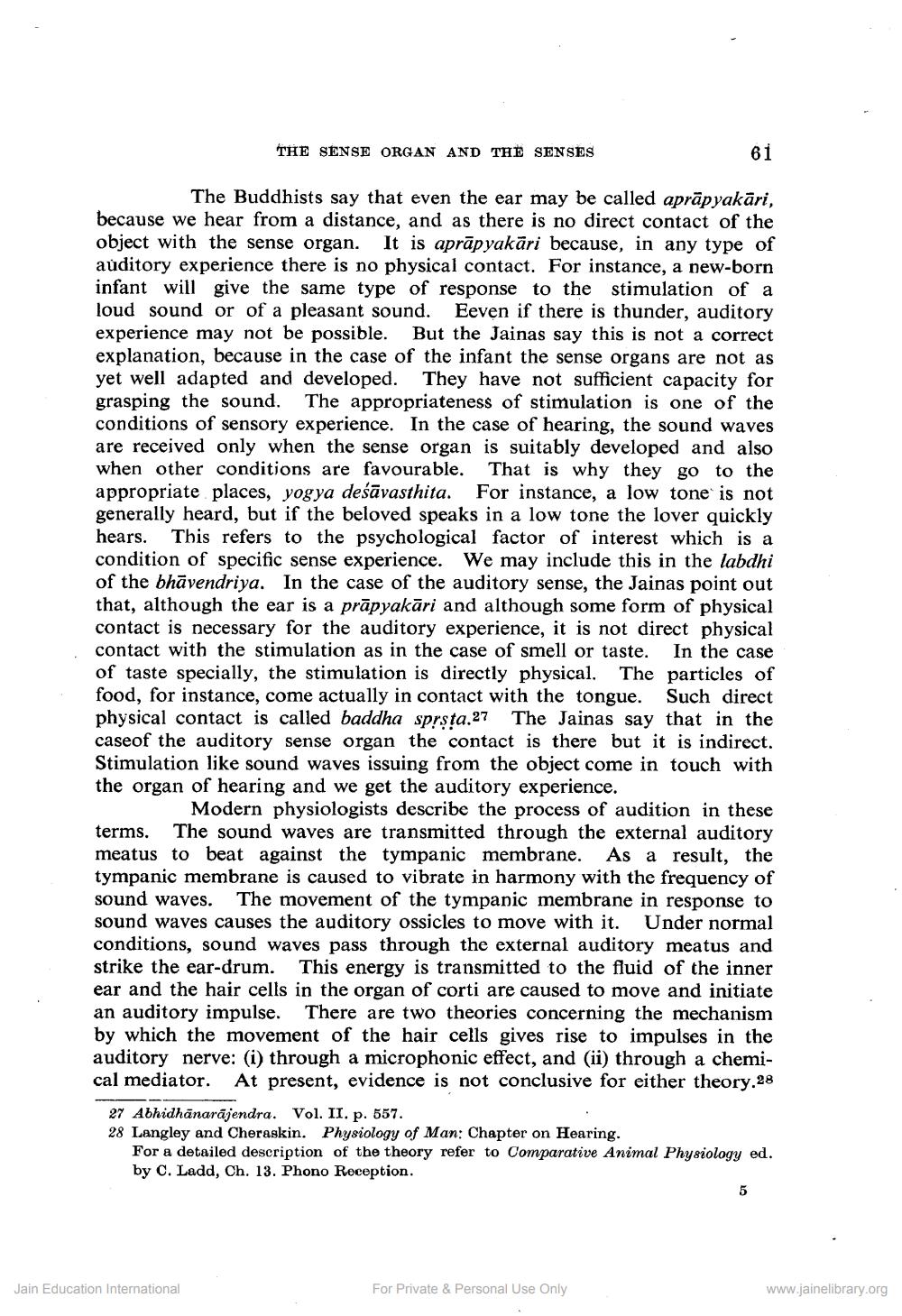________________
THE SENSE ORGAN AND THE SENSES
61
The Buddhists say that even the ear may be called aprāpyakāri, because we hear from a distance, and as there is no direct contact of the object with the sense organ. It is aprūpyakāri because, in any type of auditory experience there is no physical contact. For instance, a new-born infant will give the same type of response to the stimulation of a loud sound or of a pleasant sound. Eeven if there is thunder, auditory experience may not be possible. But the Jainas say this is not a correct explanation, because in the case of the infant the sense organs are not as yet well adapted and developed. They have not sufficient capacity for grasping the sound. The appropriateness of stimulation is one of the conditions of sensory experience. In the case of hearing, the sound waves are received only when the sense organ is suitably developed and also when other conditions are favourable. That is why they go to the appropriate places, yogya deśāvasthita. For instance, a low tone is not generally heard, but if the beloved speaks in a low tone the lover quickly hears. This refers to the psychological factor of interest which is a condition of specific sense experience. We may include this in the labdhi of the bhāvendriya. In the case of the auditory sense, the Jainas point out that, although the ear is a prāpyakāri and although some form of physical contact is necessary for the auditory experience, it is not direct physical contact with the stimulation as in the case of smell or taste. In the case of taste specially, the stimulation is directly physical. The particles of food, for instance, come actually in contact with the tongue. Such direct physical contact is called baddha sprsta.27 The Jainas say that in the caseof the auditory sense organ the contact is there but it is indirect. Stimulation like sound waves issuing from the object come in touch with the organ of hearing and we get the auditory experience.
Modern physiologists describe the process of audition in these terms. The sound waves are transmitted through the external auditory meatus to beat against the tympanic membrane. As a result, the tympanic membrane is caused to vibrate in harmony with the frequency of sound waves. The movement of the tympanic membrane in response to sound waves causes the auditory ossicles to move with it. Under normal conditions, sound waves pass through the external auditory meatus and strike the ear-drum. This energy is transmitted to the fluid of the inner ear and the hair cells in the organ of corti are caused to move and initiate an auditory impulse. There are two theories concerning the mechanism by which the movement of the hair cells gives rise to impulses in the auditory nerve: (i) through a microphonic effect, and (ii) through a chemical mediator. At present, evidence is not conclusive for either theory.28
27 Abhidhānarājendra. Vol. II. p. 557. 28 Langley and Cheraskin. Physiology of Man: Chapter on Hearing.
For a detailed description of the theory refer to Comparative Animal Physiology ed. by C. Ladd, Ch. 13. Phono Reception.
Jain Education International
For Private & Personal Use Only
www.jainelibrary.org




